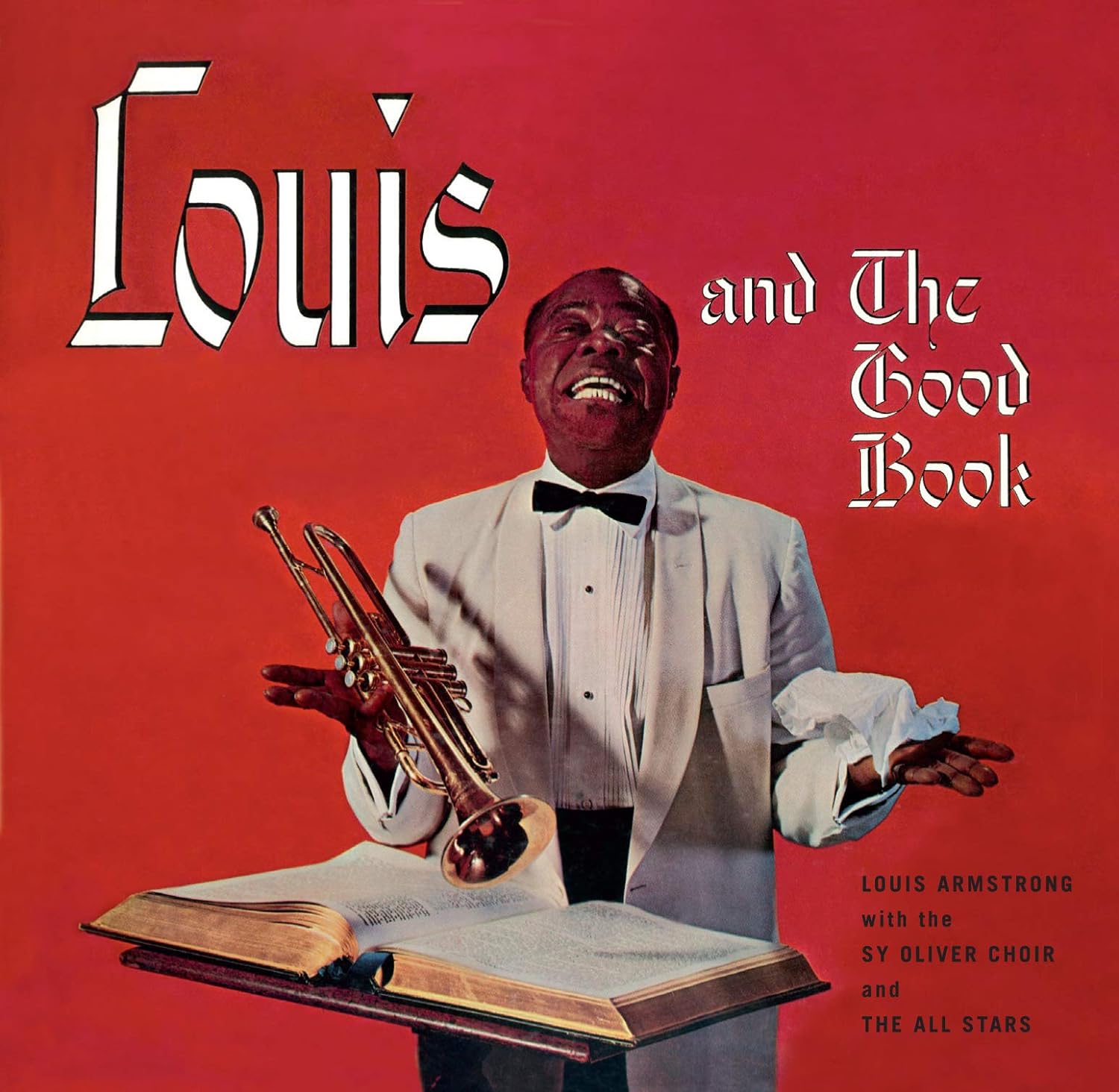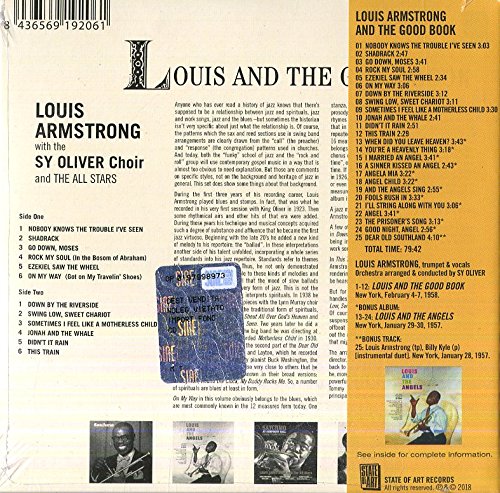ARMSTRONG LOUIS – LOUIS AND THE GOOD BOOK CD
10,00 €
1 Nobody Knows the Trouble I’ve Seen
2 Shadrack
3 Go Down, Moses
4 Rock My Soul
5 Ezekiel Saw the Wheel
6 On My Way
7 Down By the Riverside
8 Swing Low, Sweet Chariot
9 Sometimes I Feel Like a Motherless Child
10 Jonah and the Whale
11 Didn’t It Rain
12 This Train
13 When Did You Leave Heaven?
14 You’re a Heavenly Thing
15 I Married An Angel
16 A Sinner Kissed An Angel
17 Angela Mia
18 Angel Child
19 And the Angels Sing
20 Fools Rush in
21 I’ll String Along with You
22 Angel
23 The Prisoner’s Song
24 Good Night, Angel
25 Dear Old Southland (*)
Out of stock
Description
Deluxe Edition: Thick Cardboard Fold Open Mini-LP Replica With Inner Slleeves. 24-Bit Remastered. The two albums included here were among the “pop intended” productions Decca put into the market in the mid-Fifties, in an attempt to sell Louis Armstrong to a wider audience. In fact, in addition to being a seminal jazz figure both as a trumpeter and as a vocalist, Louis had always been a true pop artist. Having Joe Glaser as hisagent, Louis was also one of the few jazz musicians with the freedom to record for as many companies as he wished at the same time. During the same years in which Decca’s Milt Gabler produced these pop LPs, Norman Granz made Louis record more straight ahead jazz albums with Ella Fitzgerald and Oscar Peterson, as well as the classic rendering of Gershwin’s “Porgy and Bess” with Ella and an orchestra conducted by Russell Garcia. This said, it must be pointed out that Gabler was also responsible for recording Louis in one of the most satisfactory projects of his later years, a multi-LP set titled “A Musical Autobiography” (finished slightly before the first session for Louis and the Angels), on which Satch revisited old songs and blues he had recorded in the Twenties and Thirties and which he hadn’t played for a long time. In any case, despite being less jazz-oriented than the aforementioned items, “Louis and the Good Book” and “Louis and the Angels” (especially the former) also contain their gems. As the original liner notes of “Louis and the Good Book” rightly point out, these were not Armstrong’s first recordings of spiritual tunes. He had done some renderings of these songs in the Thirties, and he probably knew all of them since childhood as part of his cultural heritage.



